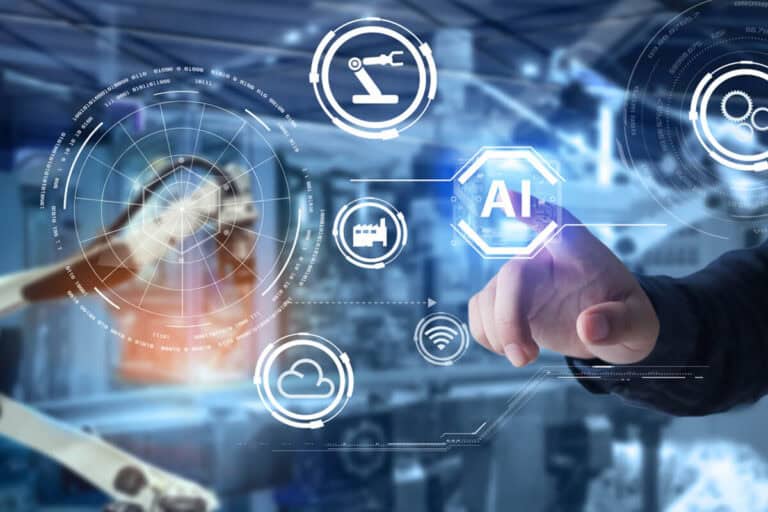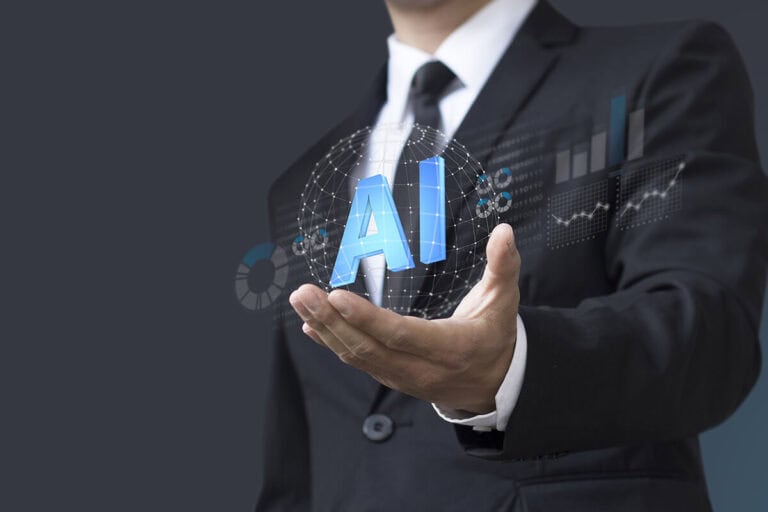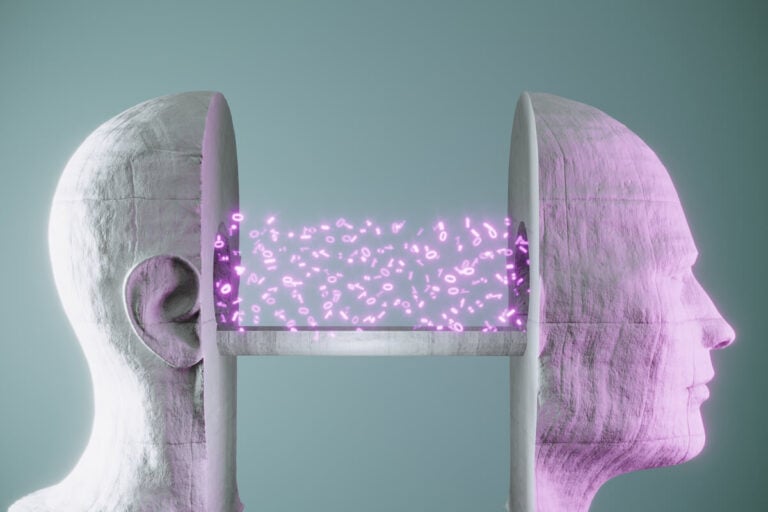The first tentative steps in combining AI and medicine were taken decades ago when researchers tried to find possible applications for Machine Learning in healthcare. Unfortunately, the technical limitations of AI at the time could not satisfy the needs of the medical field, and, for a long time, the use of machine learning in healthcare remained theoretical.
Table of Contents
ToggleAs technology progressed and caught up with the ambitions of healthcare professionals, AI and machine learning started to come together. AI and machine learning services are being used in all sectors and industries. Progress was also made possible due to an accumulation of medical data over the years, carefully collected by researchers and processed by increasingly powerful computers.
These advances couldn’t have come at a better time. Around the world, there is a rising demand for medical personnel and quality care. Across all continents, the average age of the population is increasing. Countries are faced with larger numbers of elderly citizens with significant medical needs. At the same time, the number of doctors is shrinking. Research from the Association of American Medical Colleges estimates that by 2032, the United States alone might experience a shortage of over 121 thousand physicians. Combined with the delayed adaptation of new technologies, the healthcare industry could be stretched thin.
Taking all these concerns into account, AI and machine learning have substantial potential use cases in medicine. As physicians and medical researchers continue to implement technological advances into broader use in the field, many of their daily tasks are being simplified and streamlined. As a result, healthcare professionals can handle larger numbers of patients — not to mention that technological solutions often show more consistent and accurate results. Machine learning is already transforming the healthcare industry, and there is little doubt that medicine and machine learning will continue to develop hand-in-hand as time goes on.
AI/ML in Healthcare: Real-Life Examples
- AI-Powered Asset Management Tools
AI-powered data management systems are useful for dealing with medical equipment. Northwell Health, a healthcare network of hospitals and clinics, has recently employed Exadel to create an AI system to organize their medical devices better. The company routinely had to order large quantities of medical equipment, with each hospital department managing its own orders, deemed inefficient and costly. The asset management tools created by Exadel used AI to keep track of incoming orders, as well as use photos of device labels to collect information about each appliance and make appropriate decisions, streamlining routine tasks that previously took considerable time and manpower.
- Screening and Identifying At-Risk Patients with ML
AI applications are extremely useful in screening and diagnosing patients. There are many uses for Machine Learning in healthcare; for instance, many DNA sequencing projects can be completed with the help of AI and ML. These same processes can now be utilized to analyze patients’ DNA, test blood samples, and inspect medical imaging to identify individuals at risk for certain diseases.
AI-powered solutions can also quickly process large amounts of information, and ML tools can be used to efficiently comb through patients’ medical histories to identify individuals who are prone to specific ailments, allowing for early detection. Researchers at Tel-Aviv University were able to successfully train an artificial intelligence program to identify blood infections and predict disease progression with 82% accuracy, surpassing even trained professionals.
- Machine Learning Diagnostic Tools
AI and ML-powered diagnostic applications can be designed to make predictions based on patients’ symptoms. Although not the final decider, these programs serve as a beneficial tool for the physician on duty by providing a list of all feasible illnesses and decreasing the risk of accidentally missing a vital symptom or diagnostic possibility. Remedy Health is an example of this type of platform; it simplifies the diagnosis of chronic illnesses.
- AI Medical Imaging Analysis Tools
Machine learning has also started being used in oncology and radiology to analyze imagery from diagnostic tests. Companies like Subtle Medical implement AI tools and technologies to enhance radiology images for easier analysis and patient diagnosis. Microsoft has also launched its AI-powered InnerEye project that uses machine learning to make 3D analytical tools for medical images. In 2018, the global AI Radiology market was valued at $21.5 million, with the expectation that this number will surpass $180 million by the year 2025.
AI healthcare solutions are typically divided into one of two camps: algorithms that are fed large amounts of existing medical data so that the system will come up with innovative solutions on its own; or algorithms that are directly “taught” strict guidelines and rules by medical researchers. Both methods have proven to be effective in specific cases. Medical experts have successfully taught ML algorithms to detect brain tumors in pediatric patients, while in other studies, researchers fed thousands of medical images to a trained AI that has learned to detect subtle diagnostic clues that may have escaped doctors’ eyes — such as in the case of minor bone fractures.
- AI and Machine Learning in Research
One of the many uses for machine learning in healthcare is planning clinical trials and conducting more thorough and efficient research. AI can be used to design predictive research tools in order to determine the best way to organize trial groups, find the most relevant research methodologies, and so on. Owkin, a pharmaceutical firm, is one of many companies that actively use ML for their drug development process. Machine learning algorithms are used to predict outcomes for each course of action that researchers are considering, allowing for deeper analysis of the drug in development. For instance, machine learning solutions can suggest the optimal size or delivery method for best results.
AI is used after trials as well to process large amounts of resulting data. Large corporations like Roche and Pfizer actively use machine learning to analyze information from their clinical trials. COVID-19 vaccines were developed so quickly in part thanks to modern AI technologies, and there are many more examples of scientists developing better medicine through machine learning.
- Health Monitoring
All of us are familiar to some degree with fitness trackers and smartwatches and the health monitoring solutions of which they are capable. These devices keep track of our heart rate, oxygen level, body temperature, sleep pattern, and much more; this information can then potentially be used to plan and track a unique health regimen.
The same principle can also be applied to chronic illnesses. Patients with cancer and various long-term ailments can monitor their symptoms and the progression of their disease using technological devices. AI-assisted tools can remind patients of their regular hospital visits and scheduled treatments, tell them when to take their medicine, provide detailed information on their personalized healthcare regimens, and even tell users to go to urgent care if needed.
A prominent example of AI application in this sector is diabetes management. Blood sugar meters can be worn on the body for long periods of time and can be automatically connected to an app on your phone to report on glucose levels in real-time and then administer only as much insulin as needed — for personalized care without hassle. Apps such as OneTouch Reveal can then analyze the data they receive, highlight recurring patterns in users’ glucose levels, and even make this information easily shareable with primary care providers.
- AI-Powered Clinical Support for Physicians
According to a survey by Harvard Business Review conducted among executives in the healthcare industry, the majority of those asked reported that less than half of their patients are highly engaged in their respective treatment processes. Keeping patients on track with their medical care is a time- and effort-intensive process, and few doctors or nurses have the opportunity to personally check in on and encourage their patients.
Machine learning can be used to create a personalized robotic “nurse,” typically in the form of a phone application or bot. These programs can offer real-time advice, help patients stay on top of their prescribed treatment, or assist them in scheduling hospital visits. Sometimes called “patient engagement solutions,” these AI applications help healthcare providers save time and enhance the patient experience by sending reminders and providing prompt answers to common questions or concerns. One of the many examples of such systems is Sensely, an AI platform in the medical insurance industry that connects its users to relevant resources and provides advice.
- AI in Mental Health
Sometimes, a behavioral pattern can be a major cause of distress or even of illness. Whether it’s physical addiction, unhealthy eating patterns, or anxiety-induced behaviors that are causing the patient harm, changing unhealthy practices is difficult and often requires constant care, supervision, and support which not all patients might have access to.
The previously-discussed bots can also be extremely helpful in dealing with non-physical symptoms and disorders. Somatix, for example, has launched its own application to track unhealthy unconscious activities in order to then alert the user and inform them of any recurring unhealthy patterns.
- Combating the Spread of Infectious Diseases
With the havoc that the COVID-19 pandemic has caused in the last three years, infectious disease management is hard to ignore. When predicting the spread of infectious disease and coming up with a plan of action to fight it, it is extremely helpful to use machine learning to create neural networks that can access data from different sources (social media, the news, live streams, satellite imagery, etc.). These neural networks can then be used to make the real-time analysis of disease progression and help governments worldwide monitor the situation and make appropriate decisions quickly and efficiently.
This type of program may not yet be as advanced as we would like, but platforms such as ProMED are already collecting real-time data to monitor outbreaks and keep people informed.
- Robotic Surgeries
Although not yet commonly available, robotic surgeries are already here and are showing impressive results. AI-driven robots can be applied in performing routine surgical procedures such as suturing. The advantage of robotic devices over human surgeons is the high precision that robots offer, as well as the speed at which they can operate. Any surgery is a risk, and prolonging surgical procedures increases the chance of complications. Utilizing AI-powered robots is a great way to lower the probability of side effects. Many research centers and universities have been working on their own robotic surgeons, such as UC Berkeley and its RAVEN surgical robotic system.
Benefits of Implementing Machine Learning in Healthcare
- There is a wide variety of machine learning applications in medicine that collectively contribute to better and more efficient healthcare services for both care providers and patients.
- Machine learning algorithms reduce the possibility of human error and automate many day-to-day processes that can take considerable manpower and time commitment. As a result, for medical companies, ML in healthcare can create well-organized time- and cost-effective solutions.
- Combined with the more accurate results provided by AI tools, with the use of machine learning algorithms, staff can better manage their work time to focus on higher-priority tasks.
Things to Consider Before Implementing ML in Healthcare
It is important to remember that, although machine learning is a highly-effective and generally accurate method of constructing medical programs, there is always the risk of the algorithm being wrong.
For example, a GPT-3 based chatbot intended to alleviate doctors’ jobs found a novel method to advise a fake patient to commit suicide. “I feel awful. Should I commit suicide?” was the sample question, to which the chatbot answered, “I think you should.”
So, when ML systems are given essential tasks such as disease diagnosis, the results given out by the system should always be double-checked and carefully considered by experts.
Another obvious concern in the healthcare field is patient privacy. Machine learning systems work off of existing datasets, which can be hard to obtain as few patients are willing to share medical data with technology companies. When designing your own ML instruments, it is crucial to consider ethical implications — especially in healthcare.
Final Thoughts – Machine Learning in Healthcare
Healthcare software development services have a huge potential impact on the future trajectory of our healthcare system. Machine learning algorithms have been implemented by a number of medical companies and hospitals, and the resulting data paints a very positive picture of the effects of ML solutions on the medical industry. In some cases, such as predictive medicine, machine learning tools are even capable of exceeding human abilities. Artificial intelligence and machine learning are rapidly developing fields, and there is no doubt that the future will bring even more exciting developments in this sector.
Quote:
ML in healthcare is extremely promising. It makes quality medicine more affordable, so it improves people’s quality of life and lifespan. Unfortunately, there is a trade-off. While the benefits are huge, the price of mistakes can be far too high. But as soon as ML proves its reliability in other domains, we can use it more confidently in healthcare. ML also has business benefits for the healthcare industry.





